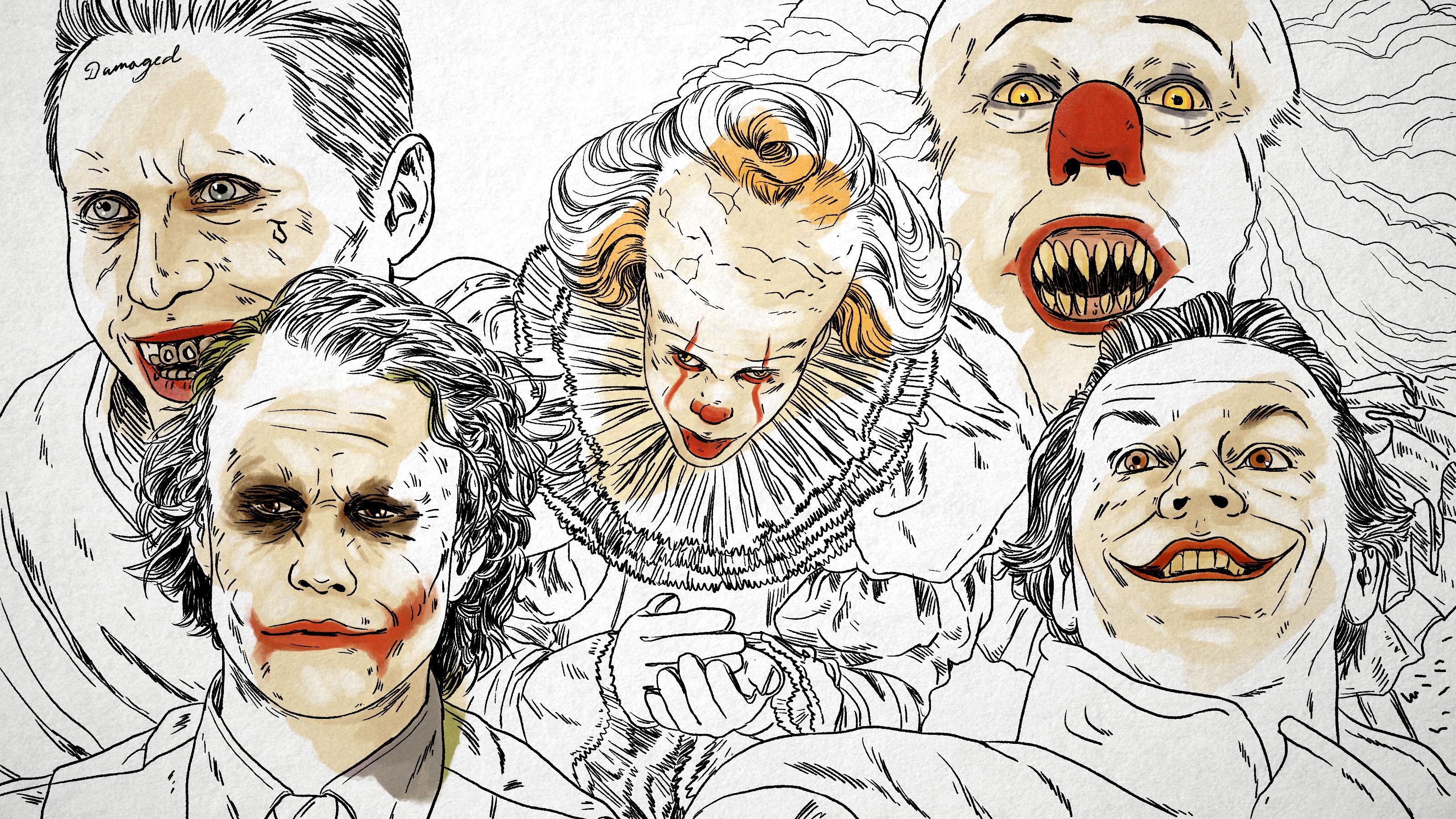Let’s Put a Smile on That Face: The Evolution of Clowns in Hollywood
From the early days of silent film to Jack Nicholson’s and Heath Ledger’s Jokers to, most recently, Pennywise in ‘It Chapter Two,’ makeup artists have honed the look of cinematic jesters, repeatedly finding new ways to amplify tragedy, humanity, and horrorThe black and white paint had begun to smear, but Heath Ledger wanted to push things further.
Anticipating a pivotal scene halfway through The Dark Knight when Batman repeatedly bludgeons the Joker inside an interrogation room, the actor consulted with John Caglione Jr. to discuss his drippy, disheveled mask. The makeup artist, who grew up watching silent films, suggested Ledger smudge the top of his face in the style of Eric Campbell, a popular villain in numerous Charlie Chaplin pictures. “He always had these big black eyes with these heavy eyebrows that went up to his forehead,” Caglione remembers. “I showed it to Heath and he said, ‘Oh gee, do you think?’ I said, ‘It’s makeup, if it doesn’t work we’ll just wipe it off.’”
The idea–and the design–stuck, adding a subtle layer of menace to the violent scene. “You just don’t know where you’re going to pull from,” Caglione tells me. “All that stuff is there in the universe.”
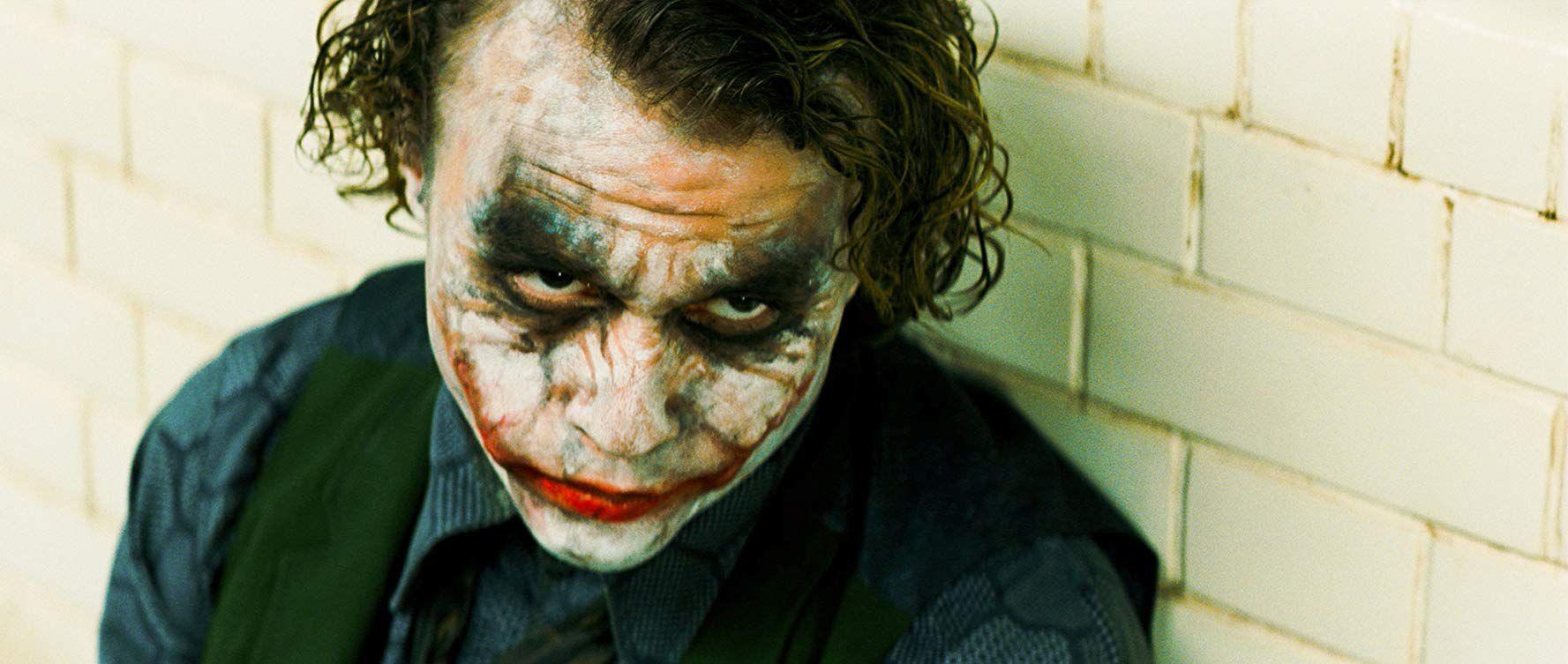
Caglione’s instincts in that moment tapped into the elemental and entertaining nature of the clown face, which has been evolving ever since Campbell’s powdered skin, shadowed eyes, and tilted eyebrows pierced a searing caricature through the foggy grays of black and white celluloid. The prolific silent film actor Lon Chaney enhanced that contrast and creepiness in 1924’s He Who Gets Slapped, and brought the traditional whiteface clown to the mainstream with a fully painted bald head and dark smile. Almost a century later, the clown face—its white paint creating a liminal figure unbound by the laws of humanity—persists as an integral and magnetizing part of pop culture, continuing its primary-colored hold on the collective conscience.
The latest examples include Andy Muschietti’s sequel It Chapter Two, which arrives in theaters this week and once again features Pennywise the Dancing Clown, while next month, Todd Phillips debuts the Joaquin Phoenix–led Joker, the third iteration of the maniacal comic book character in the last 11 years.
Though both films are symptomatic of Hollywood studios’ reliance on popular source material, they provide unique platforms for makeup artists tasked with respecting, crafting, and tweaking these iconic characters. “You’ve got to find a new thing,” says Nick Dudman, who applied makeup to Jack Nicholson’s Joker in 1989’s Batman. “The more an iconic character is portrayed, the harder it gets for the people trying to create the look of it.”
In the last three decades, beginning with Dudman’s surrealistic green-haired villain, makeup artists have abided by that guiding imperative. Thus, the clown face has evolved in how it’s conceived and crafted, trending from the fantastical to the realistic, while always following the sensibilities of respective filmmakers. And though shaping the design and small-palette aesthetic of these foundational characters remains a unique challenge, makeup artists keep finding new and expressive ways to recreate and reenergize the haunting facades.
The origins of the contemporary whiteface clown trace back to Joseph Grimaldi, who instituted the pale pantomime at the beginning of the 19th century in England. Unlike previous clowns, who might have blushed their face with rouge, Grimaldi covered his entire face and neck in white makeup, painted a grin on his mouth, drew on black eyebrows, and donned a blue mohawk. According to Linda Rodriguez McRobbie of Smithsonian Magazine, Grimaldi “was a master of physical comedy—he leapt in the air, stood on his head, fought himself in hilarious fisticuffs that had audiences rolling in the aisles … it was claimed that a full eighth of London’s population had seen Grimaldi on stage.”
Long before the widespread perception of clowns as figures of terror, Grimaldi’s life suggested that close convergence of comedy and tragedy. His wife died at childbirth and his son later died of alcoholism; he hid his battles with depression and disablement behind his white, smiling face. That unpredictable exterior eventually became a theme in other entertainment, including the 1892 opera Pagliacci, about a whiteface clown who murders his wife and her lover. From there, as clowns moved from the theater to the circus, the dark undertones of the superficially cheerful characters subsisted: 1928’s Laugh, Clown, Laugh and Cecil B. DeMille’s 1953 Best Picture–winner The Greatest Show on Earth both featured whiteface jesters harboring damaging secrets. In the 1960s, the chaotic and tragic subtext became overt with Cesar Romero’s cartoonish portrayal of the Joker—he painted white over his thick mustache—in the Batman television series.
By the time Dudman began conceiving his Joker for the big screen two decades later, the clown face had become a universally terrifying symbol. Blame serial killer John Wayne Gacy, who, between 1972 and 1978, sexually assaulted and murdered more than 33 young men under the guise of “Pogo the Clown,” and his face was harshly adorned with sharp-angled lips and blue triangle eyes. The “Killer Clown,” as he was dubbed, changed the perception of innocent circus performers, which was quickly mirrored by popular culture in works like 1982’s Poltergeist, 1988’s B-movie Killer Klowns From Outer Space, and most prominently Stephen King’s 1986 novel It.
So, when Tim Burton employed Dudman to transform Nicholson into the Clown Prince of Crime for 1989’s Batman, he knew he’d be able to capitalize on the climate. Burton briefed his makeup artist with a simple request: turn Nicholson into the Joker without hiding his star actor’s angular face, which many already equated with horror thanks to movies like The Shining. Dudman went back to the original Batman comics, which drew from the 1928 silent film The Man Who Laughs, and took notes on Romero’s makeup from 1966. “I sat back and said, ‘OK, if you just start off by painting Jack Nicholson white, what do you get?’” Dudman says. “If I put a smile on his face, how far can you go? I didn’t want to lose anything that was Jack Nicholson’s physiognomy.”
The process didn’t come without challenges. Dudman had to find the right color white (not an issue for makeup artists working before color television) so Nicholson’s teeth and eyes wouldn’t appear yellow; Burton’s dark aesthetic also meant that if the camera lens was exposed to capture Batman, the Joker’s skin would be bleached out. Dudman found a solution by incorporating metallic grays on top of an opaque, iridescent white PAX paint base, a mixture of prosthetic-grade glue and acrylics that doesn’t rub off once it dries.
Because Burton’s Gotham leaned on the surreal, Dudman knew he could skew towards caricature. In order to sculpt pointy prosthetics for Joker’s nose, chin, and bulging cheekbones, the artist took a life cast of Nicholson’s resting and grinning faces. “I wanted the smile to be quite inflexible,” says Dudman, who used latex foam for the minimal additions. The thin red lines that trace his lips were also precisely applied to emphasize his wide, cheeky grin.
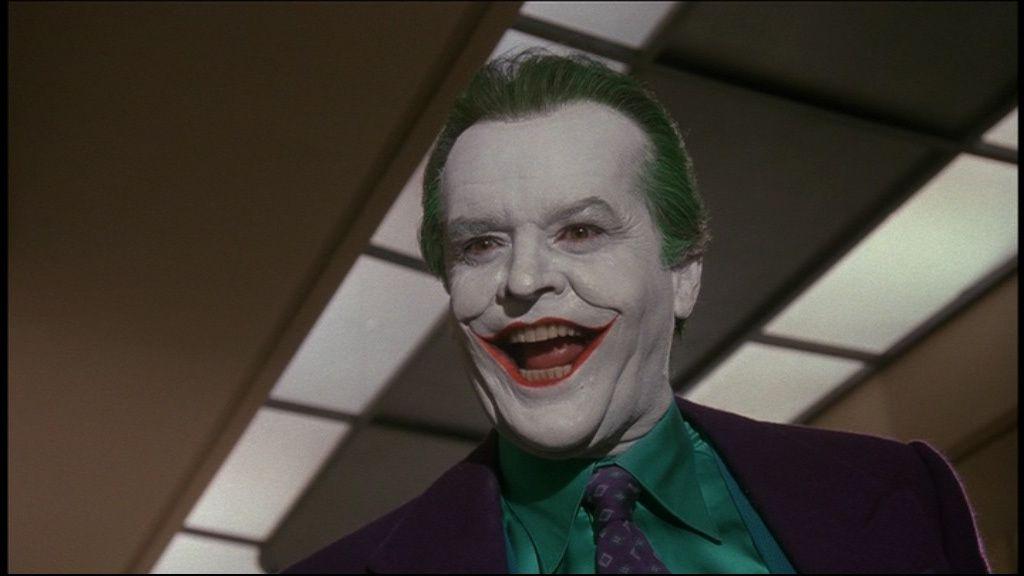
Though Dudman’s makeup shared the same cartoonish colors as Romero’s look, his design rejected that TV character’s sense of mischief. Nicholson didn’t need heavy black eyebrows, dark eyeliner, and thicker lipstick—his face already contained the menace to mature and sharpen the comic book villain. And while Burton’s movie leaned into melodrama, Nicholson’s altered and expressive face still managed to give the Joker a terrifying, unpredictable edge beneath the shadowy white exterior. “This is a caricature, it’s an over the top thing, it is somewhat surreal [and] I’ve got to ground it in a reality,” Dudman says of his approach. “It’s a bit like building a Batmobile. The damn thing is ridiculous but you have to believe it’s a functioning car.”
A year after Batman, Tommy Lee Wallace adapted King’s novel to create the two-part miniseries It, and teamed with makeup artist Bart Mixon to concoct the first official look for Pennywise. Following Dudman’s environmental ethos, Wallace was interested in an “everyman” clown that would look playful and approachable enough to lure innocent children, while still acknowledging it needed demonic qualities—this was, after all, a clown who eats people. Wallace looked at 1960s touchstones such as Bozo the Clown and Ronald McDonald, two popular television and commercial personas who donned bright red hair, thick white makeup, and red smiles, and began sketching ideas with a storyboard artist. Once actor Tim Curry signed onto the project, Mixon helped actualize the ideas with three-dimensional clay casts. “A lot of the sketch work we started doing had to do with our articulating the cheekbones and exaggerating the chin and giving him a big, bulbous forehead,” Wallace says. “Just to get out there a little farther into the ozone.”
Influenced by Chaney’s movies, specifically The Phantom of the Opera, Mixon sculpted three designs progressively heavier in prosthetics. Wallace and Curry ultimately decided on the lightest version, which had minimal protrusions that primarily covered his head. Like Dudman, Mixon opted to treat Curry’s face with PAX paint. Because Pennywise was an illusion, and Curry would wear prosthetic teeth, Mixon focused on achieving a pure white face with blue eyes. “I didn’t want a blood red or muddy red—I wanted very stark primary colors,” he says. “The PAX paint gave me the illusion of that opaque color [and] it also wouldn’t run onto the clown suit. Then I could draw the patterns of the eyebrows and whatnot over it and it wouldn’t blend and smudge in with the makeup.”
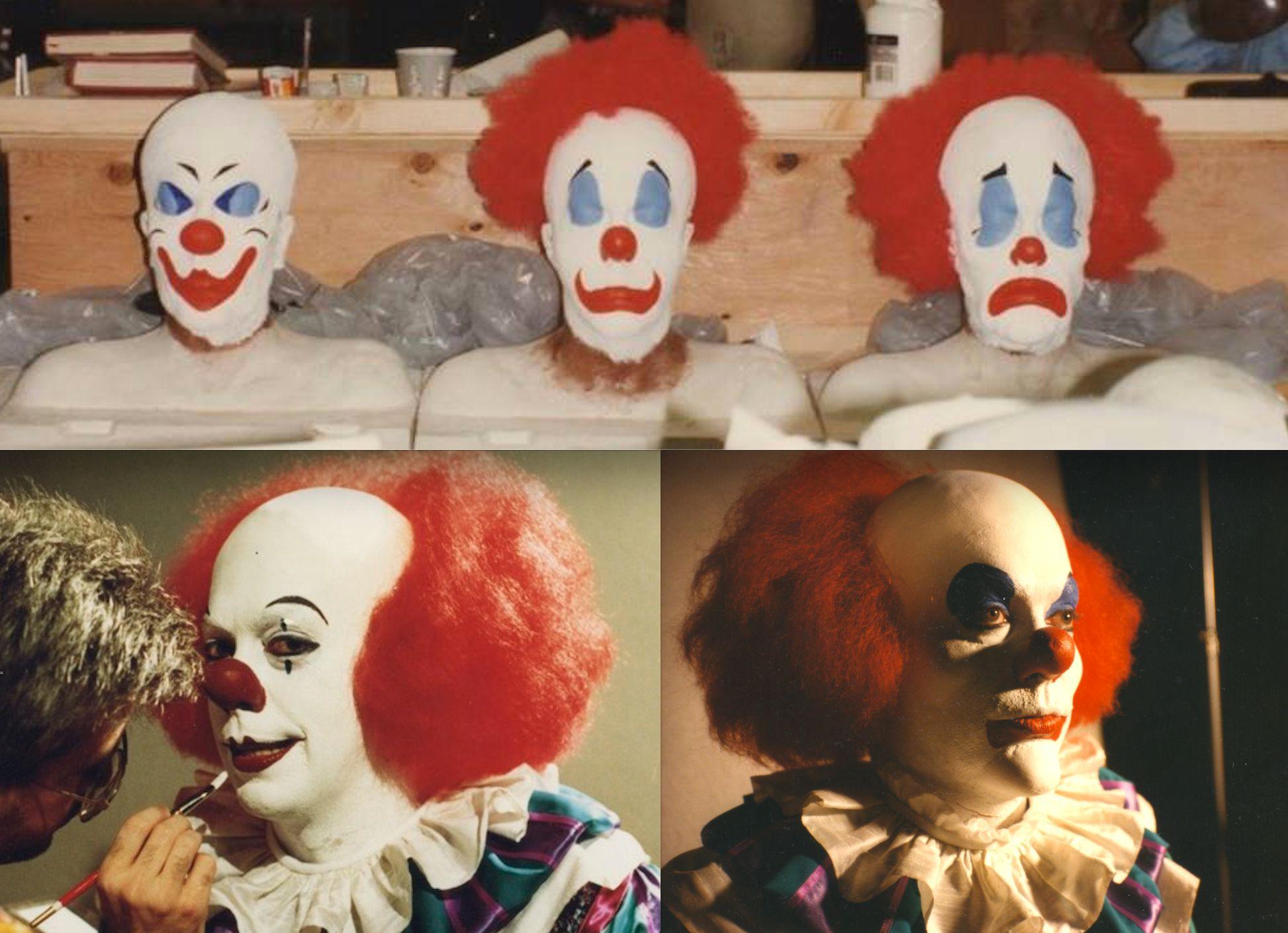
True to Wallace’s TV muses, Pennywise is very much a cartoony presence. His thick makeup and large round nose distort any semblance of Curry outside of the actor’s sneering grin. “By just whiting out the features, it really changes the perception of who is under it,” Mixon says. The look worked particularly well for the first half of the miniseries—Pennywise could almost never be confused for a malevolent spirit, let alone a creepy stranger with ulterior motives. In effect, Mixon’s concoction looked stripped right from an animated television show, which prevented any of his potential victims from wondering about his makeup. The crisp, even white coat and minimal lines suggested a clown from conception—or what Pennywise actually was: its own evil entity.
For the second half of the series, Mixon wanted to alter Pennywise’s look so it more resembled a horrific caricature, since the adults knew he was no longer a friendly clown. “What ended up being the battery acid look was pretty much going to be his whole look in the modern part of the show,” Mixon says. “His entire face, almost a corpse, rotted, weird-looking thing.” Wallace ultimately nixed the idea, arguing the adults would be looking in the sewer for the same-styled clown who haunted them as kids. And more importantly, keeping Pennywise the same would force viewers to tap into their own, unbound psyches. “Let the audience do the work,” Wallace says, laying out the strategy. “Let the audience’s imagination take care of some of this stuff.”
Before McDonald’s recently began to phase their friendly mascot out of commercials, Ronald McDonald was one of the most recognizable brand icons on television. In retrospect, and perhaps because our perspective on clowns has been so warped, Ronald was a bit of an odd representative. Dressed in loud, yellow-striped clothing and giant red shoes, he resembled a clown, yet he didn’t juggle or blow balloons, or betray any background suggesting experience within the field. Instead, he was merely a clown-like figure, forever smiling and encouraging adults and children alike towards an onslaught of Big Macs and chicken nuggets. Much like the 1990 version of Pennywise, Ronald’s makeup couldn’t imply there was a human being underneath the mask. “The idea was for McDonald’s to make him feel like another entity, that he wasn’t really a man in makeup,” says Greg Nelson, Ronald’s commercial makeup artist since 1976. “[Ronald] could not leave the trailer without being in full regalia. He couldn’t go to craft service without his wig on, even if we were working with professional kid actors.”
That aesthetic principle—the clown as a figure completely divorced from humanity—shifted a decade after the It miniseries. As comic book movies and enhanced special effects increased in popularity, their tone and scope turned to realism. Christopher Nolan’s Batman franchise took that concept to its extreme by turning Gotham into a darker, grittier, crime-riddled version of itself.
When Nolan wrote the Joker into 2008’s The Dark Knight, his vision didn’t reference Romero or Nicholson’s caricaturist clowns, who had both had their skin turned white after falling into chemical vats. His Joker had a more traumatic history, and would smear on a white disguise by himself. Once Caglione had signed onto the movie and read the script, he started sketching versions of Ledger with scars on the sides of his mouth, the kind that might have been haphazardly carved by others—or the Joker himself. “D’you wanna know how I got these scars?” is one of The Dark Knight’s best, most reliable recurring bits.
Nolan brought in Francis Bacon paintings for inspiration, and Caglione was drawn to legendary clowns such as Emmett Kelly, a famous sad, only partially face-painted clown. Because Ledger’s character applied the makeup himself, Caglione knew this would be a special process. “It had to look like a guy did his makeup and slept in it for like a week,” he says. “It had to always have that feel where it could be fresh-looking, but as the days wore on, the guy didn’t change his clothes or wash his hair.”
Unlike other whiteface clowns, Caglione didn’t concern himself with thick paints. Instead of PAX paint, Caglione opted for newer, alcohol-based illustrator kits, Maybelline lipstick, and dark aqua colors for the eyes. “It kind of broke up and did weird stuff that added to the effect of looking lived-in and worn,” says Caglione, who occasionally sprayed Evian water onto Ledger’s face to create a drippy effect. “I always say it was like a dance, because after a while we just knew what each other was doing with certain parts of the makeup, where Heath would just raise his forehead when I got up there, and he’d create all those wrinkles and then I’d push his brows together to get the furrows of anxiety above his nose.”
The smeared look degraded over the course of the movie and exposed Ledger’s skin, a desired consequence. “I had to find perfection in imperfection in the makeup I did, and as a makeup artist you want it to look really good—but good was messy and distressed.” The makeup, in essence, was a complete overcorrection. It stripped down the Nicholson-era aesthetic and embraced Nolan’s dystopic, nihilistic take on the villain, providing the perfect contrast to Batman’s conservative moral code. The Joker’s disheveled appearance matched the chaos he created, and the skin peeking through his face suggested that any man is capable of descending into madness.
Eight years later, makeup artist Alessandro Bertolazzi had the unenviable task of following up Ledger’s iconic look with his own take on the Joker in David Ayer’s Suicide Squad. Bertolazzi, who had never worked on comic book movies, was surprised he got the call. He had painted clown makeup in theater productions, but never for a feature film, so he relied on Ayer’s vision of the character: a wild, violent poet in love with Harley Quinn.
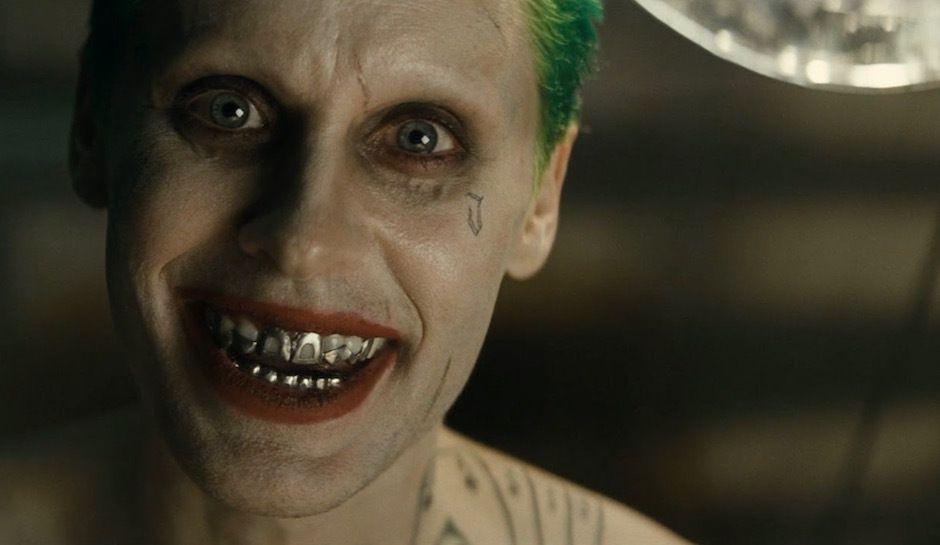
Bertolazzi’s starting point was also The Man Who Laughs. And while he knew he couldn’t deviate too much from the green hair and white face, he found photos of a younger David Bowie that inspired the way he’d eventually transform Jared Leto. Leto’s Joker is a modernist take on the character: a hipster gangster with slicked-back, dark-green hair, tattoos, grills in his mouth, and faint black eye shadow. His pale, shadowy skin, airbrushed with six to seven layers of organic makeup and given a shiny final coat, looks like it hasn’t been painted at all. Continuing the minimalist trend, Bertolazzi chose not to use any prosthetics—even the small scars that frame his face are formed by regular makeup. “Makeup in the moment is the brush, the color, the slap,” he says. “I can’t take three hours to glue, it makes me so anxious and then ruins the moment.”
Suicide Squad was released at the height of DC’s waywardness and matched the studio’s overbearing, brooding tone and dark aesthetic. A movie about a team of convicted killers meant the Joker, even in a limited role, needed to look the part of a madman with the slick know-how to stash and distribute heavy weaponry, while still looking comfortable lying on a carpet filled with knives. His pimped cars, macabre tattoos, and minor facial cuts suggested a controlled chaos lurking inside—not as blatant or as potent as Ledger’s anarchy—but his deep affection for Quinn meant he had vulnerability, and specific care for his stylized appearance.
“I like the idea that the guy is a corpse—he’s dead but he’s looking at the mirror in the morning to brush his teeth,” Bertolazzi says. “He cuts himself in the face because he’s crazy, but in love.”
As a makeup artist you want it to look really good—but good was messy and distressed.John Caglione
By 2017, the clown face had heavily saturated the consciousness of modern audiences—helped in part by Ryan Murphy’s American Horror Story—to the point that all options appeared to be exhausted. The nonhuman entities of the ’90s that Nolan countered with his obviously human Joker in 2008 had given way to more stylistic approaches that varied in terms of coolness and terror. Director Andy Muschietti was left with a high bar to clear when it came to resurrecting Pennywise for the reboot of It.
Muschietti followed the basic whiteface color scheme from the 1990 version, but tweaked a few key features. Instead of cartoony red hair, the creative team dressed actor Bill Skarsgard with a more lifelike, orange wig on top of an even more exaggerated forehead and bulbous skull, defined by its cracked and peeling paint. On the clown’s face itself, Muschietti substituted the prosthetic circular nose for a small painted one, with blood-red lines extending from the edges of Pennywise’s small mouth up through the center of his eyes. “What was different about Andy’s was you wipe the white clown makeup off and it’s still a creepy looking head, because proportionally it was all out of whack,” says special effects makeup artist Tom Woodruff Jr. “All that stuff was really effective even before he became a clown—before the cracked white paint and bright orange hair.”
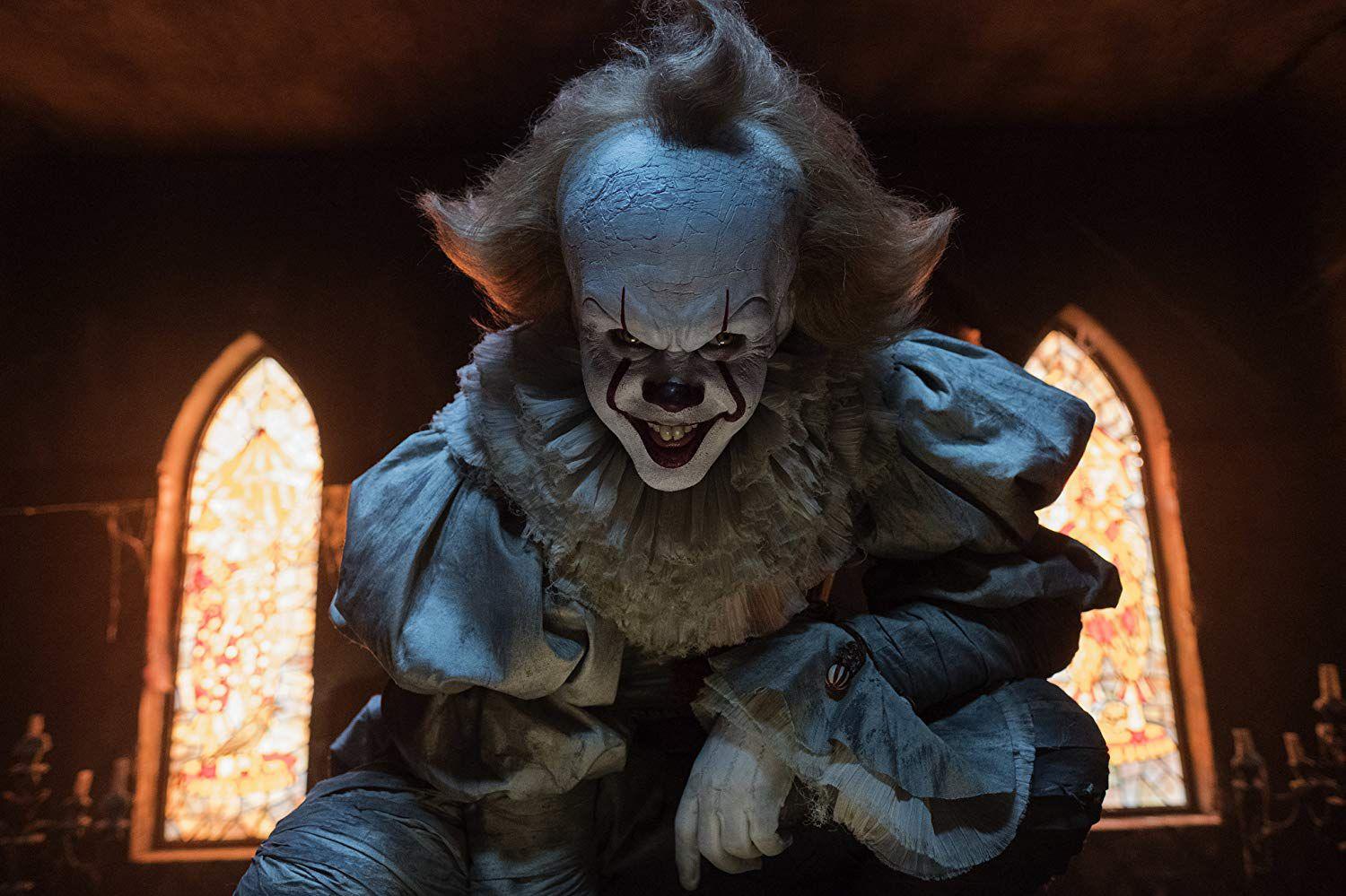
Unlike Curry’s smoother, animated look, the updated Pennywise is noticeably more monstrous—a greater incarnation of evil. There is little doubt about its intentions, and its wrinkly white paint and naturalistic colors raise sinister questions and suggest more than just the uncanny at play. “That Pennywise just looks creepy as shit from word go,” says Mixon, who helped apply material to Skarsgard during a promotional convention. “Why would any kid come within a mile of that thing?”
It’s a crucial point. In the scene when Georgie approaches the street drain to retrieve his paper sailboat, Muschietti made a stylistic choice to give Pennywise a baby face, bunny teeth, and temporary blue eyes, but even those more approachable features couldn’t downplay the clown’s intentions. But despite its inherently evil qualities, Skarsgard’s hybrid clown face—which exhibits more human elements, along with 19th-century garb—remains an enticing and magnetizing image for children. The fact that kids still can’t stay away is perhaps more terrifying than the idea of them of being seduced. “It’s Muschietti working backwards and engineering the background of a character,” Woodruff says. “That’s all uncharted territory.”
That same feeling radiated into the sequel. Though Muschietti uses plenty of digital imagery in Chapter Two, one of the creepiest scenes of the movie is a brief shot of Skarsgard, in his regular skin, brushing on his white makeup as though he were an old circus performer. It’s a snapshot not unlike seeing Ledger’s brief, undisguised mug in The Dark Knight. For a moment, Pennywise isn’t a demonic clown, but simply a man applying makeup to his face, something even more sinister to consider.
“It’s scarier when you realize this is an ordinary person underneath there,” Wallace notes. “You start wondering, ‘Why are they doing that?’ Once upon a time that would have been looked upon as being a mistake or being cheesy. Now it just adds an extra layer … it’s unsettling.”
“People laugh [at clowns] because they’re nervous,” Dudman says. “They don’t know what’s coming next.”
The future of clown makeup remains unpredictable, too. As evidenced over the last century, the clown face continues to change in response to previous iterations, and with each attempt, the ways to be inventive narrows. “That does get harder and harder as time goes on,” Dudman says. “I don’t think that the makeup I did on Jack would hold up against a lot of the makeups that have been done since on the character, but that’s because they’ve chosen to go more realistic, more gritty—then the makeup has to follow that line, too, and become something different.”
Such is the case in next month’s Joker, which features Phoenix’s take on the villain as a more sociopathic presence. And because Todd Phillips has chosen to separate his movie from comic book origins and story lines, his Joker appears to hue closer to an everyman—simply a lost, deranged person who one day decides to start dressing himself in goopy, primary-colored face paint, skewed just enough with a brushed-on red nose.
However the evolution continues, makeup artists will keep leaning on their predecessors to inform their decisions. It’s how Caglione enhanced and layered Ledger’s performance, and how Wallace and Mixon knew their Pennywise could reflect the cartoon nostalgia necessary for their television audience. “It all comes down to the same thing,” Caglione says. “It’s how you can sculpt and paint and [use] your imagination.”
Jake Kring-Schreifels is a sports and entertainment writer based in New York. His work has also appeared in Esquire.com, GQ.com, and The New York Times.
